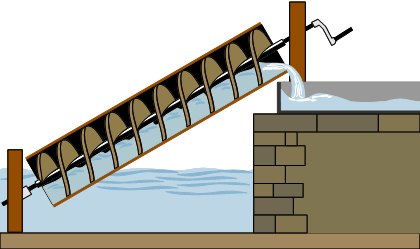Introduction to sound
Sound waves are longitudinal waves in a medium such as air. The molecules in the medium vibrate back and forth from their equilibrium position. Just like other waves, the energy of sound waves increases with the wave amplitude. The loudness or volume of the sound also increases with wave amplitude. So lets learn about Sound its properties and types
Types of waves
Mechanical waves
A wave is said to be mechanical if a material medium is essential for its propagation. e.g. water waves, waves along stretched string, seismic waves, sound waves, etc.
EM waves
These are generated due to periodic vibration in electric and magnetic fields. These waves can propagate through material media, however, material medium is not essential for their propagation.
Matter waves
There is always a wave associated with any object if it is in motion. Such waves are matter waves. These are studied in quantum mechanics.
Common properties sound waves
Amplitude
Amplitude of a wave motion is the largest displacement of a particle of the medium through which the wave is propagating, from its rest position. It is measured in metre in SI units.
Wavelength is the distance between two successive particles which are in the same state of vibration. It is measured in metre.
Time required to complete one vibration by a particle of the medium is the period of the wave. It is measured in seconds.
Waves posses double periodicity. At every location the wave motion repeat itself as equal intervals of time, hence it is periodic in time. Similarly, at any given instant, the form of waves repeats at equal distances hence, it is periodic in space. In this way wave motion is a doubly periodic phenomenon i.e. periodic in time and periodic in space.
Frequency of a wave is the number of vibrations performed by a particle during each second. SI units of frequency is hertz (Hz).
The distance covered by a wave per unit time is called velocity of the wave.
Phase and phase difference
The phase difference between the two electrical quantities is defined as the angular phase difference between the maximum possible value of the two alternating quantities having the same frequency.
Echo
An echo is the repetition of the original sound because of the reflection from some rigid surface at a distance from the source of sound.
If the distance between the speaker and a rigid object is near than 15m, then the echo jumps up with the original sound, making the voice to be heard not once but continuously, is called reverberation.
The branch of physics which deals with the study of production, transmission and reception of sound is called acoustics.
Pitch
This aspect refers to the sharpness or shrillness of the sound. Pitch is a perceptual property of sounds that allows their ordering on a frequency-related scale, or more commonly, pitch is the quality that makes it possible to judge sounds as “higher” and “lower” in the sense associated with musical melodies.
Timbre, also called timber, quality of auditory sensations produced by the tone of a sound wave. The timbre of a sound depends on its wave form, which varies with the number of overtones, or harmonics, that are present, their frequencies, and their relative intensities.
Loudness refers to how loud or soft a sound seems to a listener. The loudness of sound is determined, in turn, by the intensity of the sound waves. Intensity is a measure of the amount of energy in sound waves.
Transverse waves and longitudinal waves
Transverse waves
A wave which particles of two medium vibrate in a direction perpendicular to the direction of propagation of a wave is called transverse waves. Water waves are transverse waves, as water molecules vibrate perpendicular to the surface of water while the wave propagates along the surface.
Characteristics of transverse waves
- All particles of the medium in the path of the wave vibrate in a direction perpendicular to the direction of propagation of the wave with same period and amplitude.
- When transverse waves pass through a medium, the medium is divided into alternate the crests i.e. regions of positive displacement and troughs i.e. regions of negative displacements.
- Crests and troughs advance in the medium and are responsible for the transfer of energy.
- When transverse waves advance through a medium there is no charge in the pressure and the density at any point of the medium, however shapes changes periodically.
- Medium conveying a transverse wave must possess elasticity of shape.
Longitudinal waves
A wave in which particles of the medium vibrate in a direction parallel to the direction of propagation of wave is called longitudinal wave. Sound waves are longitudinal waves.
Characteristics of longitudinal waves:
- All the particles of the medium along the path of the wave vibrate in a direction parallel to the direction of propagation of wave with same period and amplitude.
- A compression and adjacent rarefaction form one cycle of longitudinal wave. The distance measured along the wave between any two consecutive points having the same phase is the wavelength of the wave.
- The compression and rarefaction advance in the medium and are responsible for transfer of energy.
- When longitudinal wave advances through a medium there are periodic variation in pressure and density along the path of wave and also with time.
- Longitudinal wave can not be polarised, as the direction of propagation of wave are same or parallel.
If you like this post or have any suggestions do let us know in the comments we would love to hear it from you. Do follow The Mechanical post on instagram, facebook and twitter.
Also share this post with friends and family with the social links provided below.







